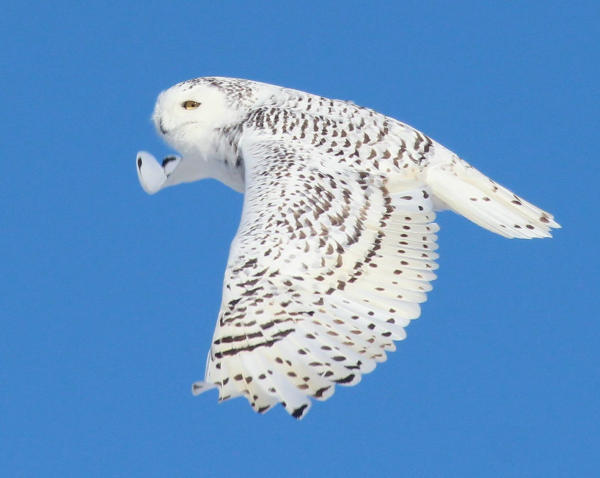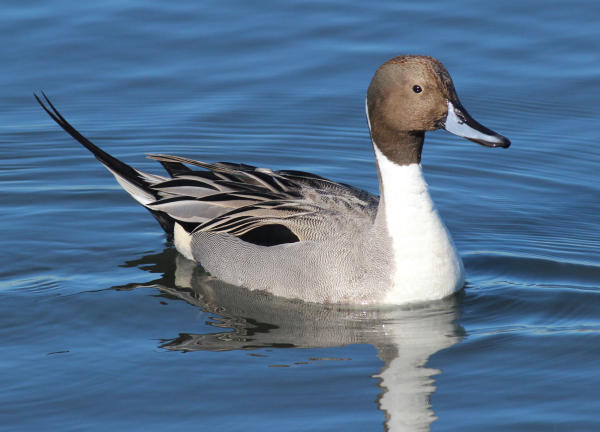
Snowy Owl

Northern Pintail
|
Building on last week’s Conservation essay underlining the importance of Duck Stamps for purchasing property for America’s National Wildlife Refuge System, let’s look a little closer at this remarkable collection of more than 560 national wildlife refuges. Each refuge is managed by the government as public land dedicated to protecting and enhancing exceptional and necessary lands for nesting, feeding, migrating, and wintering animals, especially birds.
My home state of North Dakota hosts the most national wildlife refuges of any state, 63. Such impressive wildlife refuges as Chase Lake, Lostwood, Long Lake, Audubon, Arrowwood, J. Clark Salyer and many others with their associated waterfowl production areas emphasize the importance of our northern prairie and wetland habitats to migratory birds.
Every state can boast one or more national wildlife refuges, so your local refuge(s) should be at or near the top of your regular birding destinations. Certainly, birding opportunities are available at some level, and many refuges are among the best photo destinations, such as Bosque del Apache in New Mexico, Ding Darling (Sanibel) in Florida, Edwin Forsythe (Brigantine) in New Jersey, Aransas and Santa Ana in Texas, Sand Lake in South Dakota, Horicon in Wisconsin and the Sacramento Refuge Complex in California to name a few.
Where is your favorite refuge?
Alaska is our largest state, and it boasts the most refuge acreage of any state, which includes the Yukon Delta, Kenai, Izembek and Arctic National Wildlife Refuge.
The Arctic Refuge remains one of the world’s most impressive examples of an intact wilderness ecosystem, which has been compared to the Serengeti Plains of East Africa – it is “America’s Serengeti.” The Arctic Refuge protects an abundance of wildlife including 202 nesting species of birds and Arctic mega-mammals like caribou, musk ox, moose, wolves, grizzly bears and polar bears, including the largest, most important polar bear denning site in America.
The multitude of birds that nest in the Arctic Refuge migrate through our neighborhoods during spring and fall – waterfowl, sandpipers, eagles, hawks, owls, songbirds – and some may spend the winter near you. This refuge is so important that under the direction of President Reagan, the United States created an International Treaty with Canada to protect the region on both sides of the border – the Arctic Refuge on the American side, and two national parks on the Canadian side.
All this to protect this wilderness region and the porcupine caribou herd that utilizes the Coastal Plain of the Arctic Refuge for birthing and as a fertile nursery. In turn, the native Gwichin people of Alaska and Canada, who call the Coastal Plain “the place where life begins,” rely on the caribou for food and clothing plus cultural and spiritual aspects of their lives. Yes, these people are a historic and functioning part of this intact Arctic ecosystem.
But today the Arctic Refuge is in Danger: In December 2017, some government officials decided this true wilderness protected for decades as a national wildlife refuge under international treaty should be turned into a giant oil and gas industrial complex. Will the people of America – the citizens, the voters, the birders – permit the Arctic National Wildlife Refuge’s Coastal Plain to be developed by the oil and gas industry? The wheels are turning.
Please inform yourself about this “new plan.” Make your own decision, but be sure to let your representatives and senators in Washington know how you feel about our American public lands and our National Wildlife Refuge System, including the Arctic Refuge.
Article and photographs by Paul Konrad
For more information about national wildlife refuges, see https://www.fws.gov/refuges/ and
https://www.fws.gov/refuges/about/mission.htm; also https://www.refugeassociation.org/advocacy/refuge-issues/arctic/
For more information about the plight of the Arctic National Wildlife Refuge, see http://ourarcticrefuge.org/ and http://www.alaskawild.org/places-we-protect/arctic-refuge/